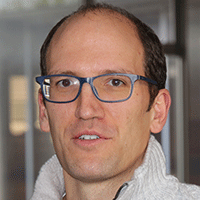Date: Sunday, June 9th, 2024
Course Length: Approximately 8 Hrs
Instructor: Guillaume Ducrozet, Full Professor, PhD, Ecole Centrale Nantes, LHEEA Lab. (France)
Course Materials: Please bring your laptop
Course Description: The design of marine structures is mainly driven by the loads induced by ocean waves. Then, the accurate description of those nonlinear waves is essential in ocean engineering. To understand, model and reproduce the propagation of realistic complex wave fields (irregular, short-crested) in domains of significant size, the most relevant approach relies on the use of nonlinear potential flow theory. Different approaches can be used to solve the problem numerically. This course aims to present one accurate and efficient methodology to address the fully nonlinear wave propagation problem, namely the High-Order Spectral (HOS) method.
It includes a short theoretical description with a focus on the numerical properties of the method. The advantages and drawbacks, compared to other existing approaches, are presented. Special emphasis is placed on the practical use of HOS models with recommended practices, taking as reference the open-source codes HOS-ocean and HOS-NWT. The course will be the opportunity to gain hands-on experience on the new versions (and features) of both codes that will be released in Spring 2024. This is complemented with different examples of combined use of Numerical and Experimental Wave Tanks to address ocean engineering problems. Finally, a specific section introduces the possibility of coupling between HOS and other models requiring the description of the velocity/pressure fields induced by the waves (such as CFD models to address the wave-structure interaction problems).
The course is primarily intended for industry professionals, researchers, and graduate students in marine and offshore engineering who desire an introduction on nonlinear wave propagation models as well as those who are eager to perform nonlinear wave simulations for specific applications: Digital Twin of an experimental wave tank, specific irregular sea state configuration in open ocean, wave-structure interactions, etc.
After this course, it is expected that students know how to use the open-source solvers HOS-ocean and HOS-NWT as well as how to choose the relevant numerical parameters. They will be able to perform numerical simulations of nonlinear wave propagation of different types of sea states (regular waves, irregular waves, long- and short-crested) in an open-ocean context as well as in a wave tank. They will have an idea of the possible combined use of numerical and experimental wave tanks. Finally they will know the proper methodology to couple the HOS solvers to other numerical codes such as CFD.
Course Instructor

After graduating with a PhD in Ocean Engineering from Ecole Centrale Nantes (ECN – France), in 2007, I occupied different post-doctoral positions, including a 1-year stay at DTU in 2009. Then, in 2010, I obtained a permanent position as an Assistant/Associate Professor at ECN in the LHEEA Laboratory. Since September 2023, I have been a Full Professor in Ocean Engineering at Ecole Centrale de Nantes (France) in the LHEEA Laboratory.
I have an interest in different research fields: Free-surface hydrodynamics; Nonlinear ocean waves; Numerical modelling; Pseudo-spectral methods (HOS); Rogue/freak waves; Wave-structure interactions; Experimental hydrodynamics I am the main developer of the open-source High-Order Spectral models HOS-ocean and HOS-NWT. I have authored 40+ publications in ISI peer-reviewed international journals. Since 2022, I have been deputy head of the LHEEA Lab.